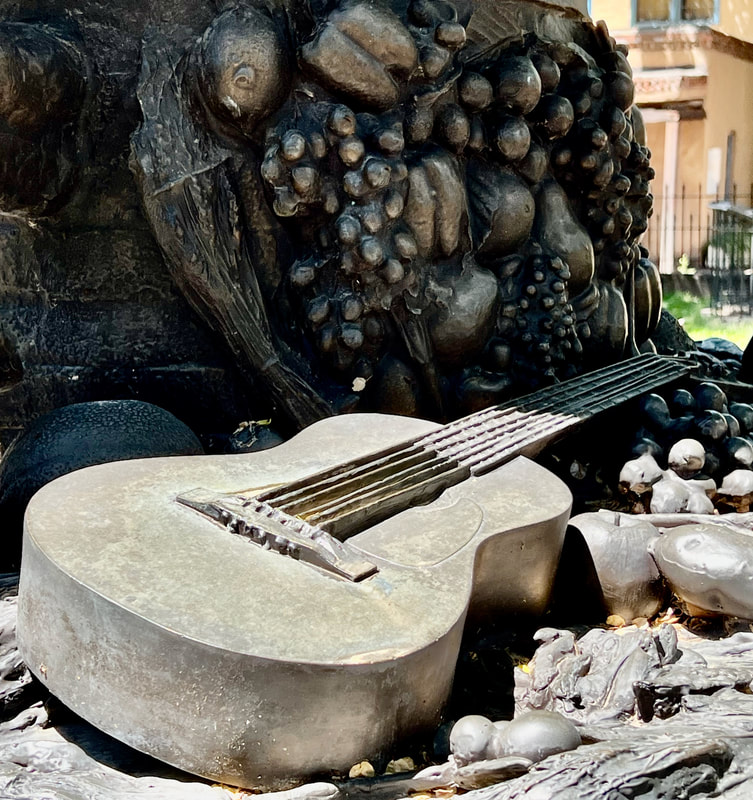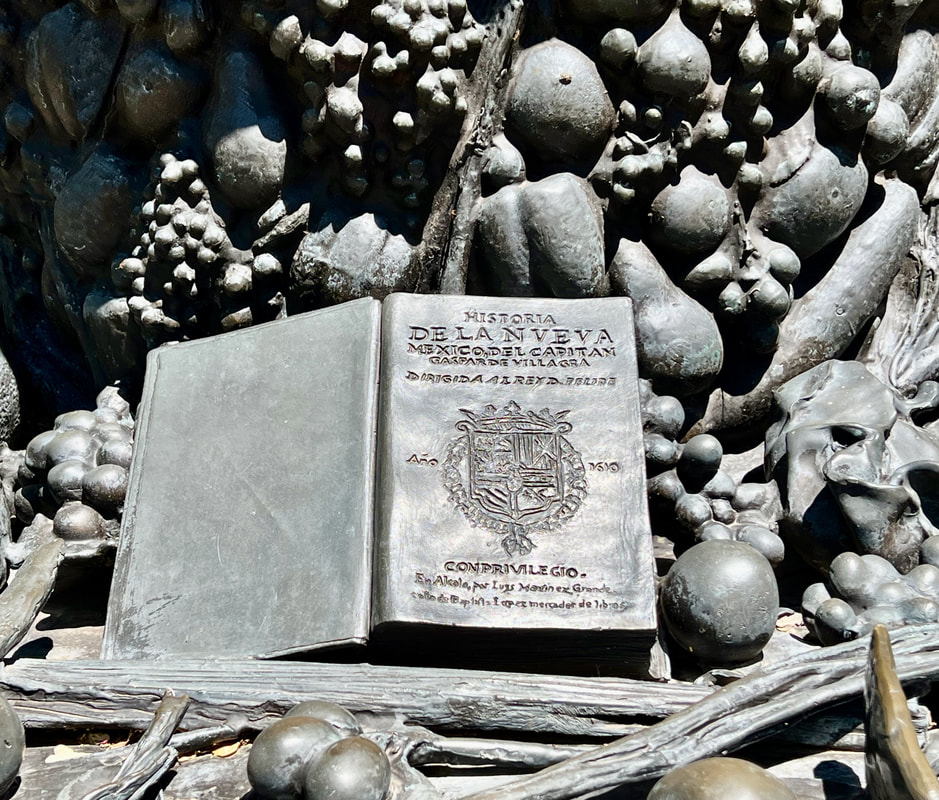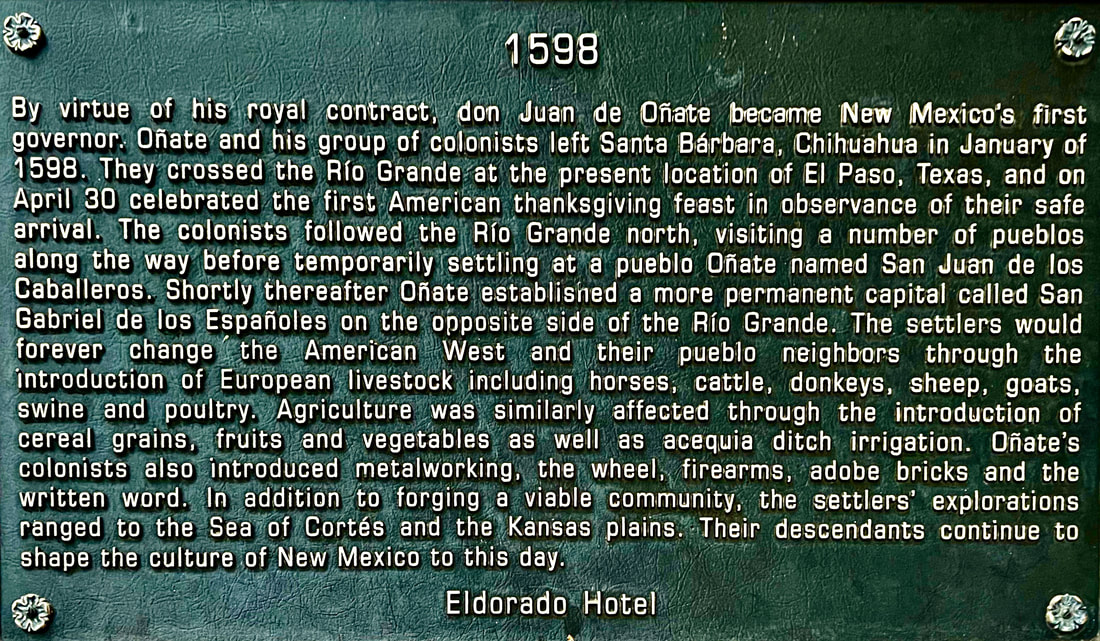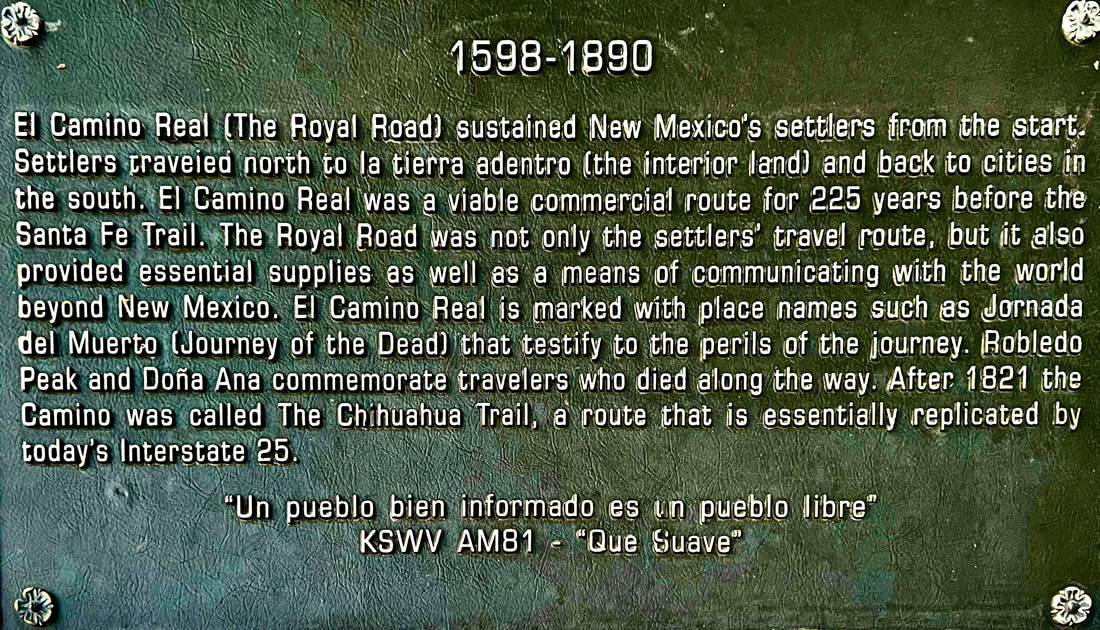|
By Miguel Pérez
Part 14 of a series You think you are walking in a beautiful, historic park in downtown Santa Fe, N.M., but you suddenly realize it's much more than that. You are taking a stroll in a history book!
Instead of turning pages, you are reading informational plaques that outline the history of Santa Fe, mostly about Hispanics, and you are admiring a four-sided monument honoring "the first European settlers of New Mexico — the Spanish colonists of 1598." You are in Cathedral Park, on the north side of the Cathedral Basilica of St. Francis of Assisi and you feel like you are in a great Hispanic American history book, until you find out that one crucial chapter has been censored, yanked out by politicians. The statue of Spanish governor Don Diego de Vargas, installed in 2007, is no longer there. It was removed by the city, fearing protesters, in June of 2020. |
|
|
Amazingly, one of the plaques that remain in the park still recognizes that, "In 1693, under Vargas’ leadership, Spanish settlers returned to New Mexico after the 1680 Pueblo Revolt in which some 400 settlers, 21 friars and many Christian Indians died." It also recognizes "Vargas' accomplishments in balancing peace and diplomacy with military strength as well as his devotion to La Conquistadora," the wooden Madonna statue he worshiped and credited for his peaceful reconquest of New Mexico, and who still resides the cathedral.
So if city officials wanted to totally erase De Vargas from this park/book, they didn't do a very good job. In fact, yanking his statue out of the park (without public notice) has created a larger controversy than the one that already existed, not only over De Vargas, but over other monuments of Spanish historical figures that have been removed in recent years in New Mexico. I wonder, when are politicians are going to learn that when they try to hide history, it becomes more visible? |
|
As I wrote in the first part of this series, when I visited the La Jornada statuary in Albuquerque and found that a key component of that monument, Juan de Oñate, was missing, I intend to dig into the monuments controversy further, and report on it in a separate article later. I'm still gathering ammunition. I intend to visit the sites of all the missing statues.
But for now, like I did with La Jornada, I want to celebrate the part of Cathedral Park that is still there. There so much history in the informational plaques there that it would be a crime for me not to quote them in some way. So, I'm sharing my photos of each of them. See photos below, and click on them to enlarge them. Now you get to walk through the pages of this park/book yourself! |
|
In the center of the park, you see a beautiful monument, erected in 2003, depicting a conquistador, a Franciscan missionary and a family of Spanish settlers, and they are standing amid the animals, fruits, vegetables, tools and musical instruments they brought to New Mexico. And above all of them stands the Virgin Mary, La Conquistadora.
"The year 1998 marked the 400th anniversary of the arrival in New Mexico of about 560 valiant men, women and children to establish, one of the earliest permanent European settlements in the United States," the monument's plaque explains. "Their leader and first governor, Don Juan de Oñate led this intrepid band north over hundreds of desolate, dangerous miles to the green valleys of northern New Mexico. It was there the colonists established themselves by introducing European crops and the first horses, sheep, goats, cattle, donkeys and poultry — thereby establishing European culture and technology in the United States, where they had not previously existed.” As I stood there admiring this monument, I kept thinking of all the times I have seen people on social media listing all the wonderful things the Spanish introduced to the New World. I kept admiring how artist Bernabé Romero and sculptor Donna Quasthoff managed to put it all together and to illustrate it with one amazing monument. |
|
The plaque also notes that these settlers came with Franciscan priests who ministered to both the colonists and to the native inhabitants of the region, and that it was their religious faith that "consoled and inspired those settlers and their descendants to endure and prevail over 400 years of isolation, abandonment, hardship and cultural challenges."
It says the monument is dedicated "to our forefathers' continuing contributions to the history, culture and values of today's America. May they serve as an inspiration to all who passed this way.” But if you don't have a chance to "pass this way," you can watch my short video/walk around this very significant monument. Notice that for sound effects, I asked the cathedral to ring its bells just in time for my video! LOL |
|
|
Only one block away from Cathedral Park, there is another historic park where another monument has been yanked from its pedestal, and where still Hispanic history prevails. Should we visit Santa Fe Plaza? Stay tuned!
|
To read other parts of this ongoing series, click: EXPLORING NEW MEXICO































